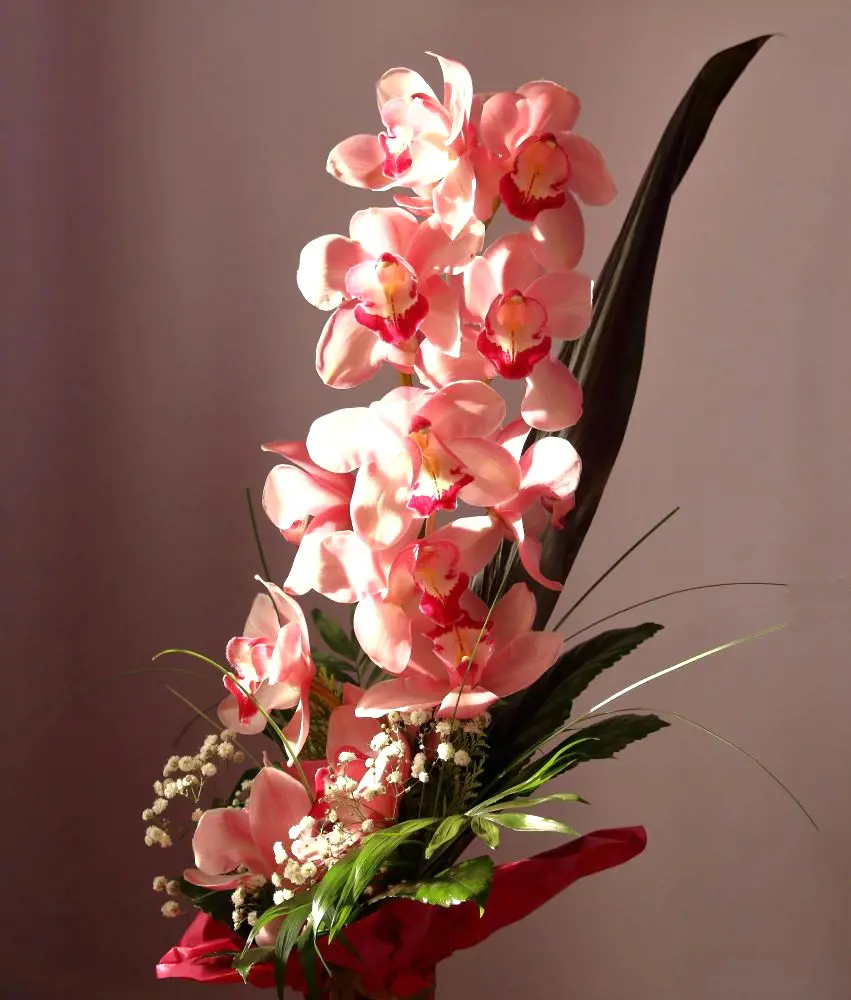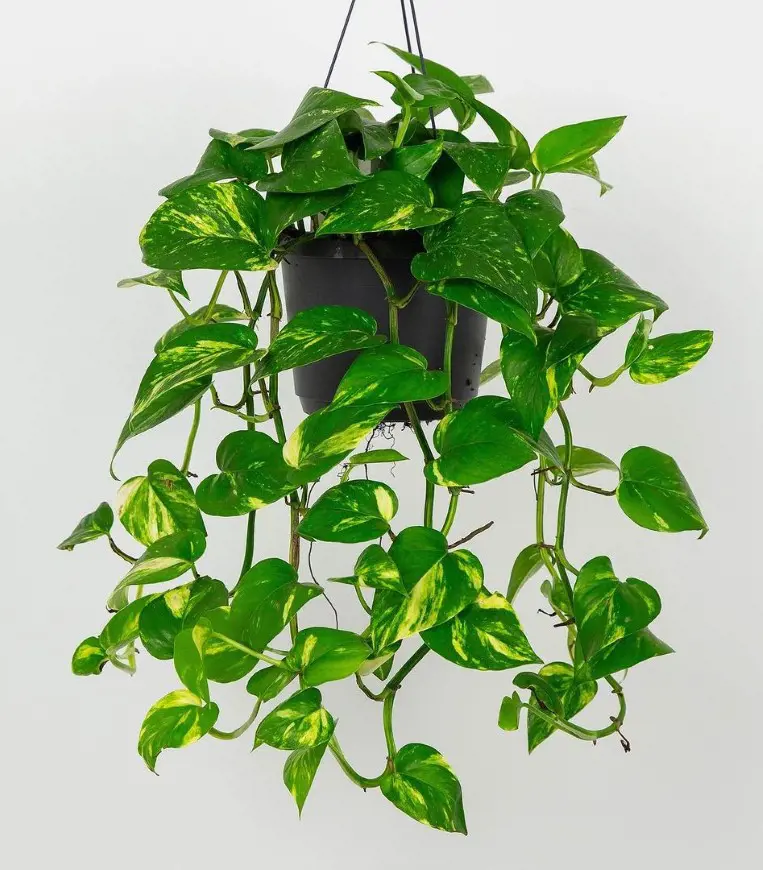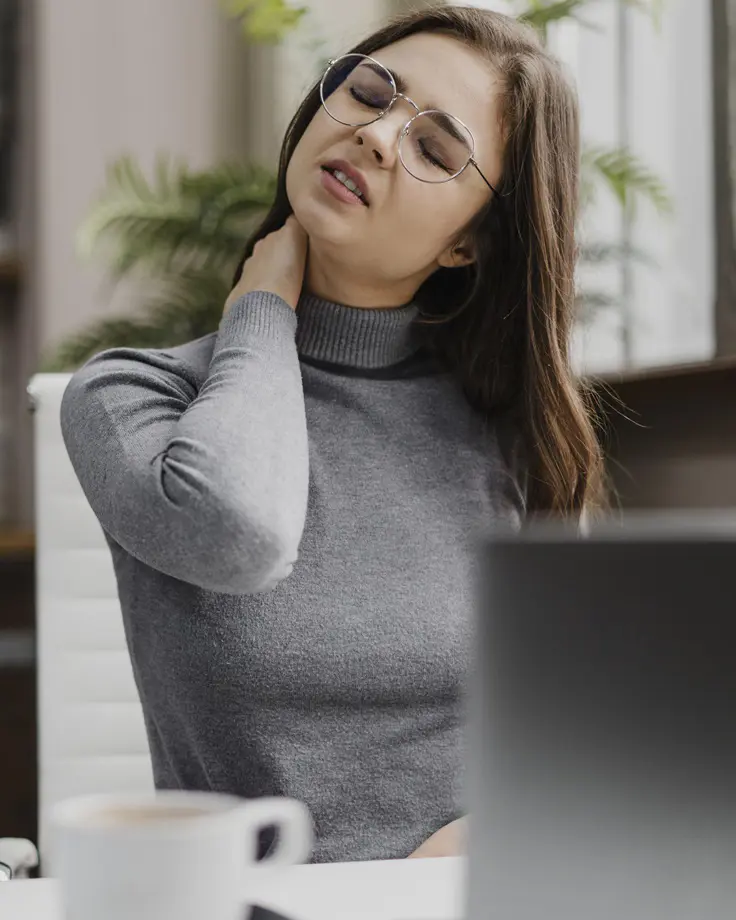How To Grow And Care For A Hosta Plant
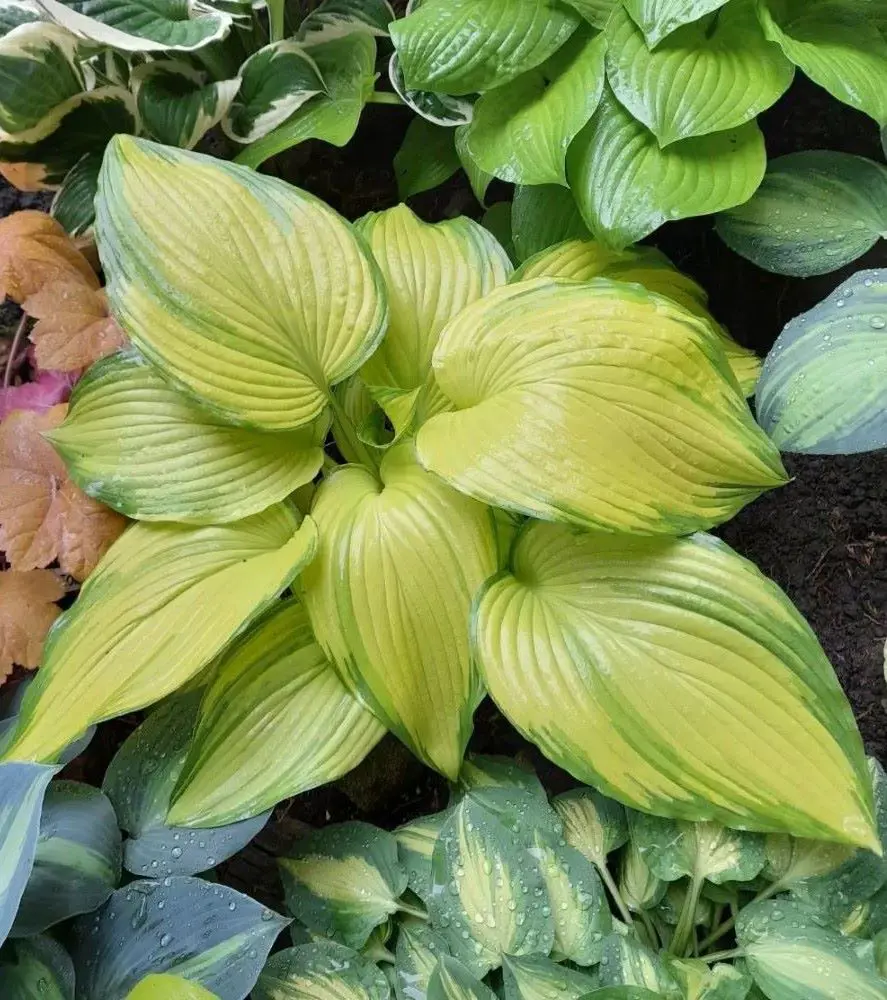
This post may contain affiliate links. If you make a purchase through links on our site, we may earn a commission.
Hosta plants are widespread perennials, often grown for their beautiful and diverse foliage. They are extremely easy to care for and can thrive in various conditions, particularly shade or semi-shade.
These hardy plants can last for many years and require just minimal maintenance once established. Hostas are suitable for growing in containers and various other garden setups.
Hosta Plant Overview
| Scientific Name | Hosta spp. |
| Common Name | Hosta, plantain lily |
| Plant Type | Herbaceous, perennial |
| Mature Size | 6–48 in. tall |
| Soil Type | Loamy, free-drained |
| Soil pH | Acidic |
| Sun Exposure | Shade, partial |
| Native Area | Asia |
| Hardiness Zones | 3–9 (USDA) |
| Toxicity | Toxic to pets |
What Is A Hosta Plant?
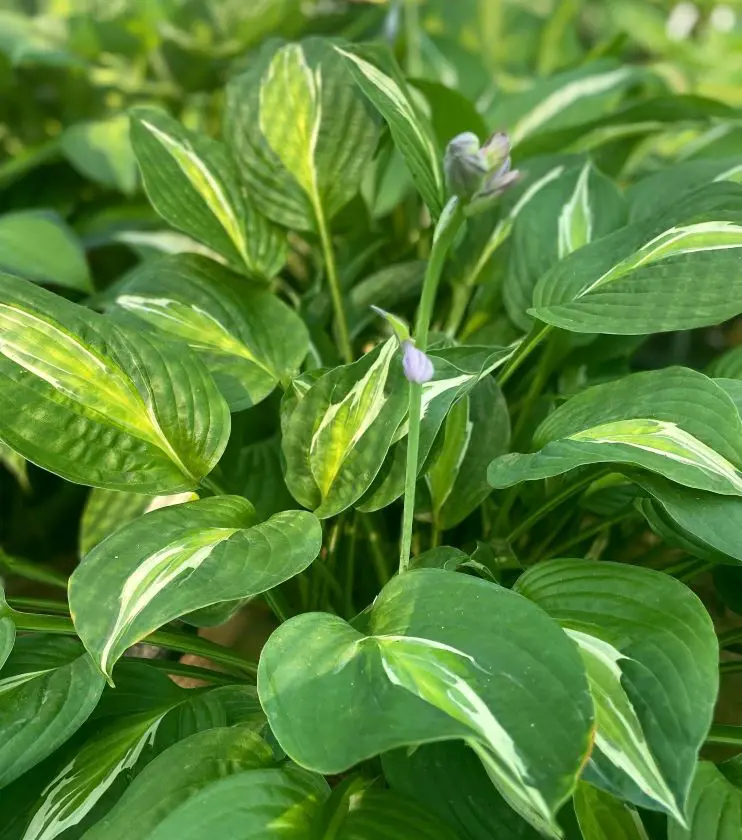
Native to eastern Asia, hosta is a genus of about 70 species of hardy herbaceous perennials. Also known as plantain lily, this plant is grown for its conspicuous foliage, which can be light-to-dark green, yellow, blue, or sometimes variegated. It also produces lovely tubular flowers in white or lavender blue, adding an extra layer of charm to their aesthetic appeal.
These moisture-loving plants are some of the most shade-tolerant plants available, making them ideal for planting alongside ponds, streams, or under deciduous trees. With countless different varieties available, there is a hosta to suit almost any garden setting that can thrive for many years in the right conditions and proper care.
Hosta Plant Care
Hostas are ideal for creating contrast among broad-leaved plants and are suitable for rock and container gardening. These plants easily grow in rich, moist, well-drained soil, but adding a bit of organic matter can help them tolerate even poorer conditions.
Despite being shade-loving plants, they also need some sun to thrive, so they should be planted in a spot that receives morning sunlight and afternoon shade.
Light
These plants generally prefer partial to full shade, although some varieties can tolerate more sunlight. Too much direct sunlight can cause their leaves to burn or fade. On the other hand, insufficient light can result in pale or washed-out foliage.
If you notice that leaves are becoming discolored or losing their vibrancy, it may be a sign that the light conditions are not ideal. In that case, adjust the placement of the plant and help restore its foliage color and overall health.
Soil
Hostas prefer rich soil that drains well and contains plenty of organic material. Adding compost or peat moss to the soil mix helps keep it moist and prevents root rot. Before planting, it's a good idea to mix in some organic matter, as this improves the soil's texture and fertility.
In addition to organic matter, hostas thrive in slightly acidic to neutral soil with a pH level between 6.0 and 7.5. So, conducting a soil pH test before planting can help determine if any adjustments are necessary to meet these conditions or not.
Water
Hostas are relatively low-maintenance once established, but they still appreciate consistent moisture. During their growing period, aim to water every two to three days, providing enough water to thoroughly saturate the soil to a depth of about 6 inches.
However, once the plant is established, adjust the frequency depending on your climate and soil conditions.
Temperature and Humidity
These plants are beloved for their dense foliage and easy care, but they do have specific preferences when it comes to temperature. Generally, they prefer moderate temperatures ranging from 15 to 27 degrees Celsius.
While they can tolerate some fluctuations outside of this range, extremes of heat or cold can stress the plant.
Fertilizer
These plants do not require excessive amounts of fertilizer, but they do benefit if you feed them some. You can use a balanced, slow-release fertilizer formulated specifically for flowering plants or one with a ratio of 10-10-10.
Avoid over-fertilizing, as this can lead to excessive leaf growth and reduced flowering. Instead, focus on providing a moderate amount annually. Incorporating organic matter into the soil, such as compost or well-rotted manure, can further help provide nutrients and improve soil structure.
Pruning
Hostas generally don't require frequent pruning. You might only need to trim them once a year, either in the spring or early summer. Also, these are pretty resilient plants, so don't worry too much about pruning them perfectly. Just remove any dead or unsightly foliage and tidy them up.
How to Prune Hosta Plant
- Start by inspecting your hosta plant. Look for any dead or damaged leaves. These are usually discolored, shriveled, or mushy.
- Use sharp garden scissors or pruning shears to carefully cut off any dead or damaged leaves at their base.
- Make clean cuts to avoid injuring the plant further.
- You can also remove any spent flower stalks (if your plant has flowered) to tidy up the appearance.
- If your hosta has grown too large and crowded, you can divide it in the spring or fall.
Hosta Fall And Winter Care

During fall, you will notice many changes in the foliage of your hostas as they prepare for winter. The leaves might start to turn yellow or brown, and eventually, they will die back completely.
At this time, your plants do not require much water, so reduce watering when they are not growing. Instead, water sparingly, only when the soil is dry to the touch.
Similarly, you should also reduce feeding and fertilization. Since the plant isn't actively growing, it doesn't need as many nutrients. Wait until spring to resume when the hosta starts to show new growth.
How To Grow Hosta Through Division
Planting hostas is generally considered easier compared to many other perennial plants. Their adaptability and low maintenance requirements make them an ideal choice for growing in all types of landscapes.
When planting, simply split a mature hosta plant into smaller sections and replant them elsewhere in your garden. This is typically done in early spring before new growth begins or in the fall after the foliage has died back. Here's how to do it:
Dig up the hosta clump: Use your fork or shovel to carefully dig around the entire root ball, lifting it from the ground. Shake off excess soil to see the root system better.
Divide the clump: You can use your hands to gently pry apart the divisions, or use a sharp knife to cut through the root ball. Each division should have at least 2-3 eyes and a healthy portion of roots.
Remove dead roots and leaves: Remove any brown, mushy, or broken roots. You can also remove any yellowing or damaged leaves.
Prepare the planting holes: Choose a location with partial shade and well-drained soil. Dig holes slightly larger than the root balls of the divisions. Mix compost and fertilizer into the soil at the bottom of each hole.
Plant divisions: Place each division in a hole, ensuring the crown is level with the soil surface. Fill the hole with soil and tamp it down gently.
Water thoroughly: Give each plant a good soaking, and keep the soil moist for the first few weeks until they are established.
How To Grow Hosta From Seeds

Growing hostas from seeds can be a bit more challenging compared to propagating them from divisions, but it's doable if you show some patience and care. You can often find hosta seeds available for purchase online or at gardening stores. If you already have seeds, you can definitely try growing them yourself.
The first thing you need to do is prepare a seed-starting mix in small pots or trays. Moisten the mix, then sprinkle the hosta seeds on top, pressing them lightly into the soil. Keep the soil consistently moist and place the pots or trays in a warm, brightly lit area, like a sunny windowsill.
Germination will take several weeks to a couple of months. Once the seedlings have grown large enough to handle, you can transplant them into individual pots or directly into your garden. Remember to provide them with regular water and partial shade as they continue to grow.
How To Get Hostas To Bloom
Most gardeners grow hostas for their beautiful foliage, but few may know that these plants also produce lovely bell-shaped flowers in various shades of white, lavender, and purple. While they are not known for being heavy bloomers, with a few tweaks to their care, you can encourage your hostas to put on a floral display.
Though these beauties are shade-lovers, they still need some sunlight to flower. Providing adequate filtered sunlight for 3 to 4 hours daily aids in their beautiful bloom. Avoid placing them in deep shade as this will hinder flower production.
Younger hostas may take a few years to mature before they start blooming regularly. Remove spent blooms once they start giving flowers. This practice encourages reblooming in some hosta varieties.
Repotting Hosta

Generally, hostas benefit from repotting every 2-3 years. If you observe signs such as roots circling the bottom of the pot and water draining too quickly, it's time to consider reporting.
Opt for a container that is slightly larger than its current pot. Plastic and ceramic pots serve as suitable new homes, but ensure they are sturdy enough to support the plant's weight and won't easily tip over.
Hosta Plant Types
There are roughly 70 species of hostas, but the diversity explodes when it comes to cultivated varieties. With over 3,000 registered cultivars, these varieties come in various sizes, leaf shapes, colors, and textures, offering a wide range of options for gardeners and landscapers.
June Hosta
This classic hosta is a favorite for its striking blue-green leaves with bright lime-green centers. The foliage is broad and sturdy, forming dense mounds that reach 15 inches tall and 35 inches wide. It's a low-maintenance plant that thrives in partial shade and produces white flowers in mid-summer.
Frances Williams Hosta
Another popular choice, Sagae features heart-shaped, blue-green leaves with a wide, creamy-white margin. The leaves have a wavy texture and form a vase-shaped clump that grows to 24 inches tall and 36 inches wide. It prefers partial shade and produces lavender flowers in late summer.
Striptease Hosta
This large hosta makes a statement with its massive, heart-shaped, golden-yellow leaves that can reach 30 inches tall and 60 inches wide. It has a bold, tropical look and thrives in full sun to partial shade. White flowers appear in mid-summer.
Gold Standard Hosta
This unique hosta has large, blue-green leaves with irregular chartreuse edges. The leaves are thick and puckered, giving the plant a substantial look. It grows 18 inches tall and 48 inches wide and prefers partial shade. White flowers appear in early to mid-summer.
Issues With Pests And Diseases

Hosta plants are normally resistant to diseases and pests. However, they are vulnerable under certain circumstances. These plants don't do well in hot conditions and can be subjected to drooping if exposed to higher temperatures.
Other common pests and diseases that can harm the Hosta plant include:
Leaf Edges Burned
When the leaf edges of a hosta plant are burned, it is often a result of excessive sunlight, high temperatures, or inconsistent watering. This can lead to the browning and crisping of the leaf edges, compromising its ability to photosynthesize and grow properly. To address this issue, ensure your plant is placed in a location with the right amount of shade and provided with consistent moisture levels.
Yellowing Foilage
Yellow foliage in this plant is a common sign of nutrient deficiencies and waterlogged soil. This can detract from the plant's visual appeal and indicate an underlying problem that needs to be addressed. Proper care, such as adjusting the plant's sunlight exposure, providing balanced fertilization, and ensuring well-draining soil, can resolve the yellowing of the foliage, promoting the plant's vibrancy.
Common Pests
These plants are also susceptible to various pests, with slugs and snails being among the most common. These pests can cause significant damage to the foliage, leading to holes and irregular feeding patterns. Additionally, aphids and mites can also infest them, impacting their overall growth. Implementing pest control measures such as handpicking, introducing natural predators, or using horticultural oils can help manage and prevent these issues.
Recent posts
Plant Care
Plant Care
How To Take Care Of An Orchid Plant? 11 Tips And Tricks
If you love gorgeous orchids but are worried they're too high-maintenance, don't worry. This guide is like a cheat sheet for orchid newbies. Forget fancy words and confusing schedules — we're talking about how to take care of an orchid pla...
Plant Care
How To Grow and Care For Peace Lily Plant
The Peace Lily is an indoor plant that is most valued for its beautiful and shiny green leaves as well as the white blooms. Hard and tolerant, it’s naturally a low-maintenance addition to your plant collection. If you are confused, let us tell ...
Plant Care
Pothos Plant Care And Growing Guide
Adding a Pothos plant (Devil’s Ivy) to your home benefits the environment and aesthetic of your personal space. It's easy to maintain and is loved for it's ability to enhance indoor air quality by removing toxins like formaldehyde, benzene, and...
Plant Care
Snake Plant Care and Growing Guide
Snake plants require low maintenance, and low light and are almost impossible to kill, making them a perfect plant for beginners and seasoned gardeners. In this guide, we will explore essential care tips and optimal growing conditions for snake plant...
Plant Care
How To Plant, Grow and Care Majesty Palm
The majestic palm, scientifically known as Ravenea rivularis, makes for a stunning indoor tree with its lush and grand fronds. Originating from Madagascar's river banks, this resilient houseplant is cherished not only for its beauty but also for its ...
Plant Care
Reasons Why Tomato Leaves Are Turning Yellow
If your tomato leaves are turning yellow, it's a cause for concern when you've put effort into growing them for that homegrown, delicious taste. The yellowing could result from various issues affecting your kitchen garden aspirations. Our guide simpl...
